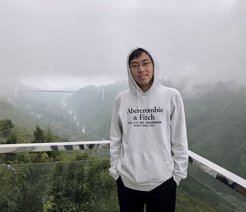Zhang-Liang Xie (China)
xie @ mpia.de
Pushing time-domain studies back in time: the variability properties of the most distant quasars
Quasars are among the most powerful, luminous objects in the universe. As such they can be studied in detail even during the epoch of reionization (z>6; less than 1 Gyr after the Big Bang). Currently, there are about 200 quasars known at z>6 and a handful at z>7. A key outstanding question in astrophysics is how to form and grow the billion-solar-mass black holes already in place in these z>6 quasars. Changes in the luminosity of quasars can provide important information about the accretion physics and growth mechanisms of supermassive black holes. Photometric variability has also been proposed as an effective method to select quasars from large sky surveys. Nevertheless, variability studies have thus far been conducted at low redshift, while time-domain studies are very limited at z~3 and virtually nonexistent at z>4. In my project, I will push a systematic time-domain study at z>6 for the first time. I will compile all the existing imaging data for known z>6 quasars from archival data, reduce them, and perform photometry in a consistent way. I will create a database with time series (i.e., light curves) for each quasar with a significant number of exposures. I will compare their behavior with variability properties of lower-z quasars and explore how to use this information for searches of the earliest quasars with the next generation of time-domain telescopes such as the Rubin Observatory/LSST.
Supervisor: Eduardo Banados (MPIA)

